An Introduction to Pediatric Acne
Pediatric acne is a common skin condition that affects children from infancy through adolescence. Understanding its causes, symptoms, treatment options, and management strategies is essential for parents, caregivers, and healthcare providers to support affected children effectively. This article explores the underlying factors that contribute to acne in young individuals, the typical clinical manifestations, evidence-based treatments, and practical care approaches to help manage this condition and improve quality of life.
Causes and Development of Pediatric Acne
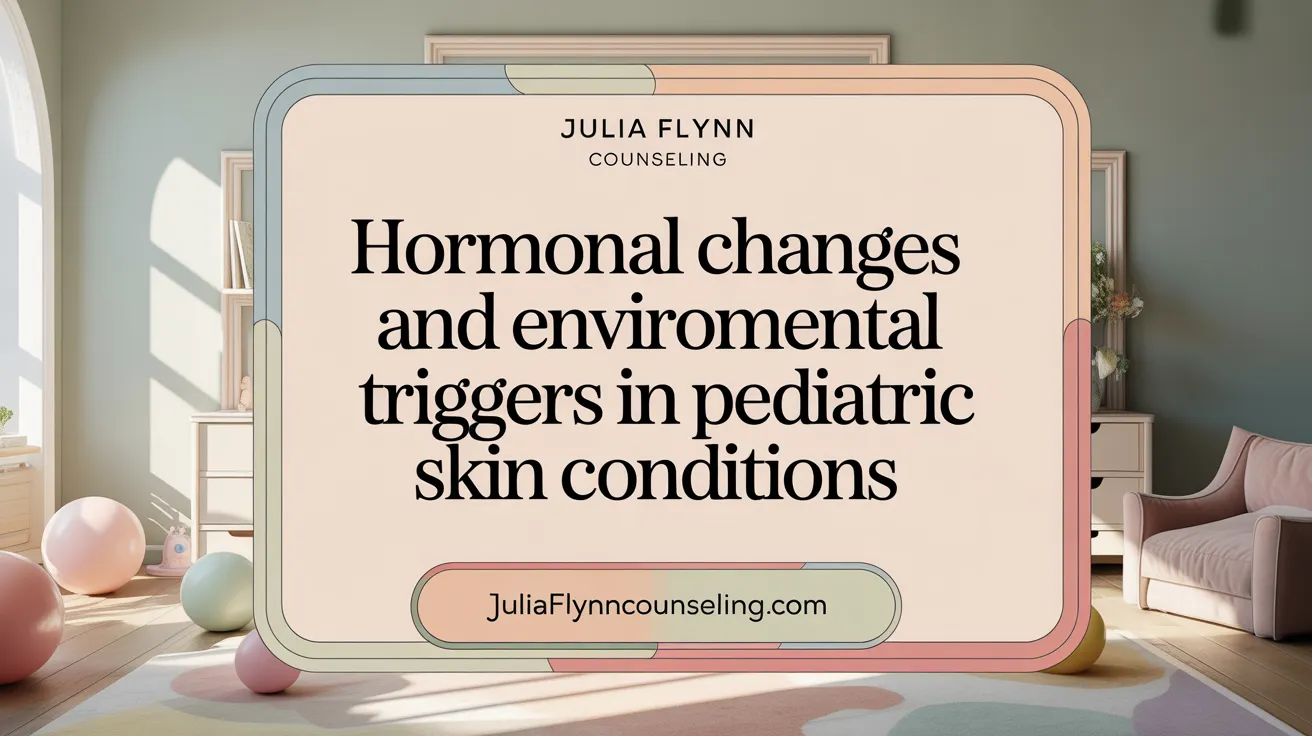
What causes pimples in young children?
Pimples in young children are mainly caused by hormonal changes that stimulate increased oil (sebum) production in the skin. During infancy, hormonal influences such as those from the placenta can lead to elevated sebum levels, resulting in clogged hair follicles. Similar hormonal activity, known as adrenarche, begins around age 7, further activating sebaceous glands.
These hormonal shifts cause excess oil to build up in hair follicles, which can become blocked by dead skin cells—forming comedones like whiteheads and blackheads—or inflamed lesions like pustules and papules. Bacterial colonization, especially by Propionibacterium acnes, can invade clogged pores, leading to inflammation, redness, and pimples.
Other aggravating factors include skin irritation from clothing, high humidity, sweating, and certain skin-care products that are too harsh or not suitable for young skin. Some cosmetics or oily skincare items may worsen the clogging process.
Infections with bacteria—particularly Propionibacterium acnes—play a significant role in inflaming these clogged pores, transforming a simple blockage into inflamed acne lesions. In summary, hormonal activity, excess oil, dead skin cell buildup, and bacterial invasion collectively contribute to pimple formation in children, often with additional environmental triggers worsening the condition.
Symptoms and Clinical Presentation of Pediatric Acne
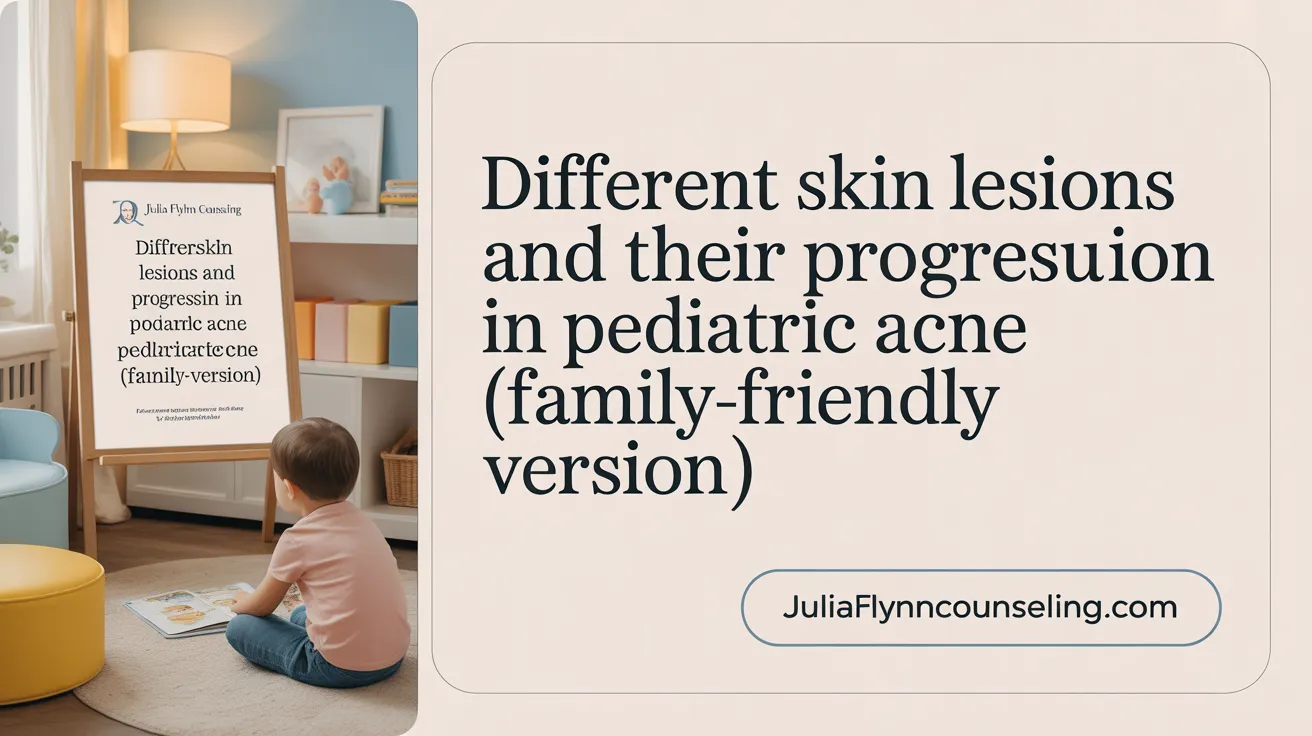
How does pediatric acne typically develop and what are its symptoms?
Pediatric acne often begins during puberty when hormonal changes boost sebum production, the oil released by skin glands. This extra oil can clog hair follicles, creating the perfect environment for bacteria, especially Propionibacterium acnes, to grow. This process leads to inflammation and characteristic skin lesions.
In children, acne can develop at any age but most commonly appears from around 6 weeks old to preadolescence. Its symptoms include a variety of skin lesions. Early signs are usually whiteheads and blackheads caused by blocked pores. As the condition progresses, inflamed lesions such as pustules, papules, nodules, and cysts may emerge. These are often red, swollen, tender, and sometimes painful.
The face is the most commonly affected area—accounting for nearly 99% of cases—followed by the back and chest. The presence of these lesions can vary in severity, from mild comedonal acne to severe inflammatory forms. Over time, persistent and severe acne can result in scarring and discoloration, including dark spots or marks.
Recognizing initial symptoms early and initiating appropriate treatment, including topical medications or systemic antibiotics when necessary, helps prevent long-term skin damage and emotional consequences. Proper care and consultation with healthcare providers are vital to managing pediatric acne effectively.
When to Seek Medical Advice for Pediatric Acne
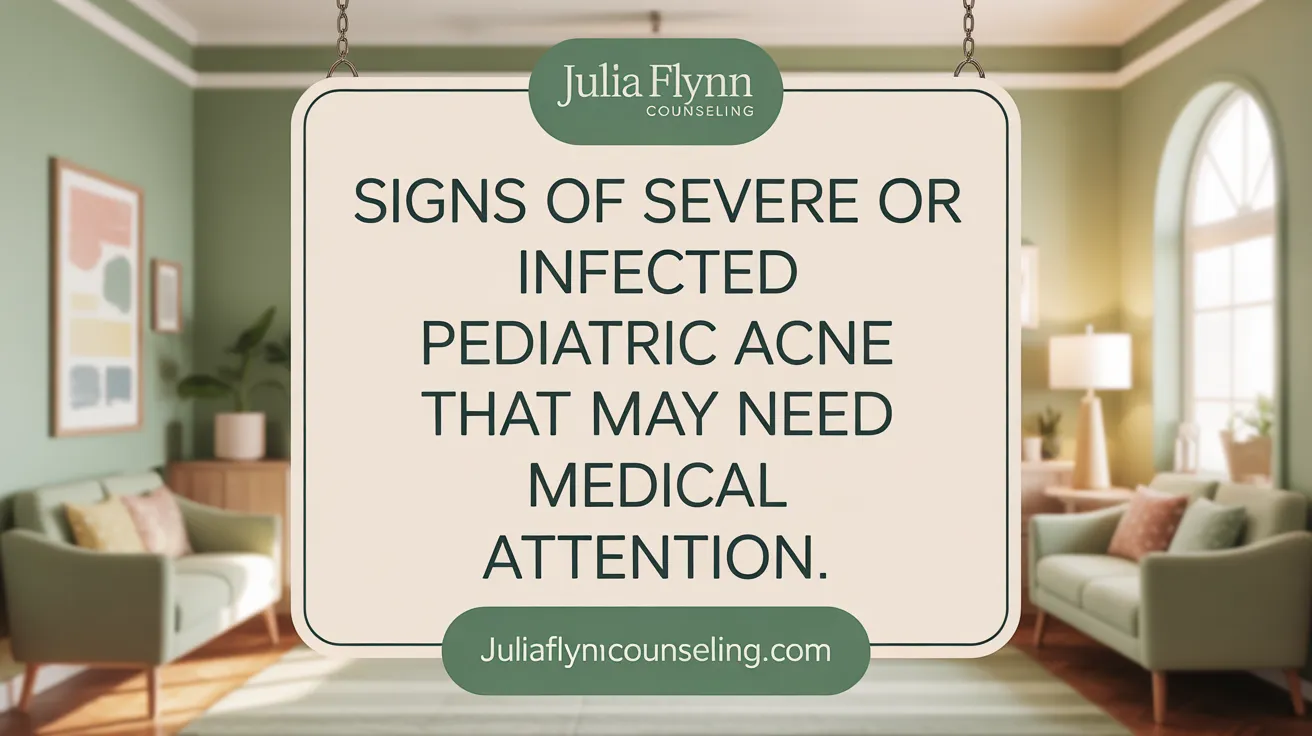
When should parents or caregivers seek medical advice for pediatric acne?
Recognizing when to consult a healthcare professional is essential for managing acne effectively and preventing complications like scarring or emotional distress. Parents should seek medical advice early if the child's acne worsens or shows signs of infection. Indicators include spreading redness, warmth, pus, or large, painful lumps that do not improve with basic skincare.
In cases where there is a spreading red area possibly indicating cellulitis or a skin infection, immediate medical attention is needed. Symptoms such as fever, streaks from the affected area, or the child appearing very ill are signs of a serious infection. If redness or streaks develop without fever, parents should seek prompt care within 24 hours.
Furthermore, if the acne does not respond to over-the-counter treatments after two to three months, a consultation with a healthcare provider is advised. This applies especially to cases with large tender bumps, cystic lesions, or when there are signs of scarring.
Risks of untreated or severe acne
Untreated severe acne can lead to permanent scars and may also cause emotional issues such as low self-esteem, anxiety, or depression. Managing moderate to severe pediatric acne early with appropriate treatments can prevent these adverse effects.
Importance of early intervention
Early diagnosis and treatment help control acne, reduce the risk of scarring, and support emotional well-being. For persistent or worsening cases, dermatologists can prescribe effective medications such as topical retinoids, antibiotics, or even systemic therapies like oral antibiotics or isotretinoin.
Parents are encouraged to monitor their child's condition closely and seek medical evaluation when there is any doubt about the severity or progression of the acne. Timely intervention ensures better outcomes and helps maintain the child's confidence and skin health.
Evidence-Based Treatment Options for Pediatric Acne
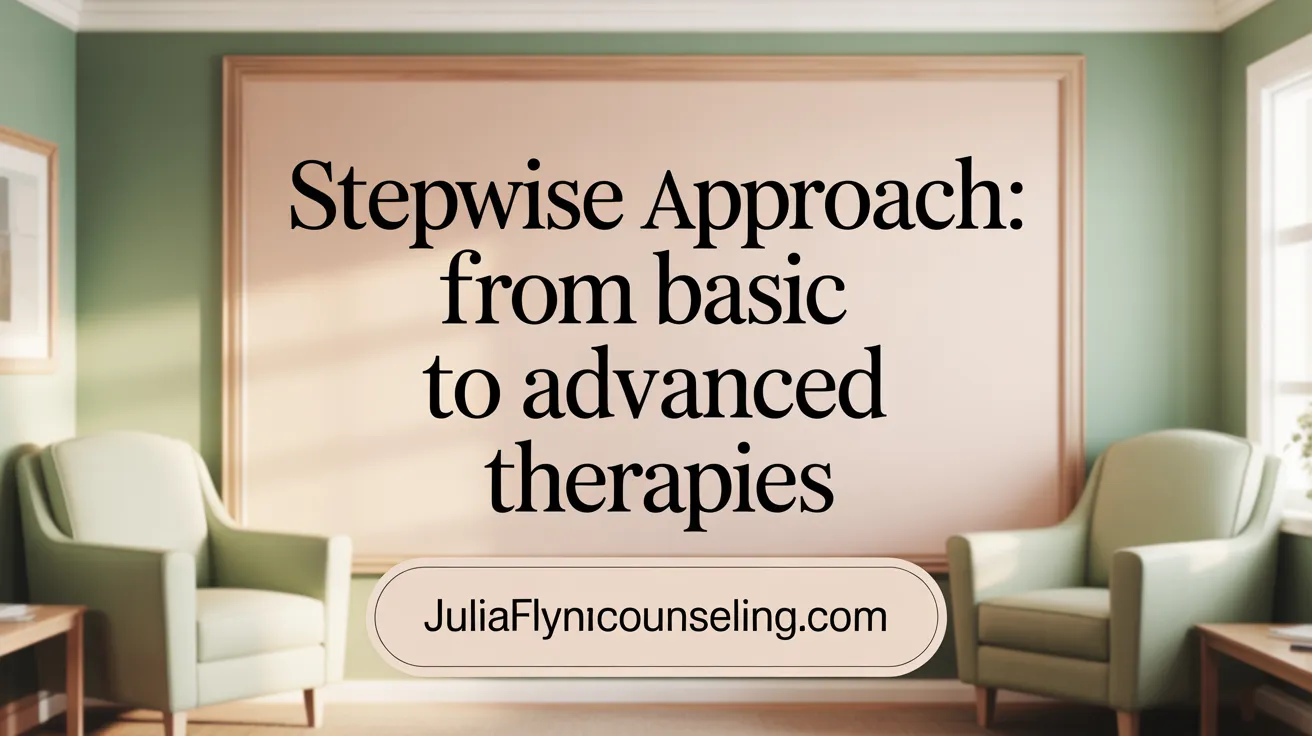
What are evidence-based treatment options and guidelines for managing pediatric acne?
Treating pediatric acne effectively relies on a stepwise approach that is tailored to the severity of the condition and the patient's age. Starting with gentle, proven methods is essential to prevent worsening and complications.
For mild cases, over-the-counter (OTC) treatments such as benzoyl peroxide and topical retinoids like adapalene are first-line options. Benzoyl peroxide works by killing Propionibacterium acnes bacteria and reducing excess oil, while topical retinoids help normalize cell turnover in hair follicles and prevent new lesions.
If acne persists or is more moderate, healthcare providers often recommend topical antibiotics such as clindamycin, possibly combined with benzoyl peroxide to reduce bacterial resistance. These combinations have been shown to improve inflammatory lesions effectively.
In more severe or resistant cases, oral medications may be necessary. Oral antibiotics like doxycycline or minocycline are common choices, especially for moderate to severe inflammatory acne. Their use is limited by age and the risk of side effects, including impacts on teeth and bone development in younger children.
Hormonal treatments, such as oral contraceptives or spironolactone, are particularly beneficial for pubertal females with persistent or hormonal acne. They help control androgen levels that stimulate excess oil production.
For severe, refractory cases, isotretinoin remains a potent option. It's highly effective at reducing sebum production and promoting long-term remission but requires rigorous monitoring due to serious potential side effects, including teratogenicity. Use of isotretinoin is restricted to patients who have failed other treatments and are under strict supervision.
Guidelines recommend individualized treatment plans that consider patient preferences, the impact on quality of life, treatment adherence, and safety concerns. Regular follow-up is critical to monitor effectiveness, side effects, and the need for adjustments.
In summary, evidence-based pediatric acne management involves a step-by-step escalation from topical agents to systemic therapies, ensuring safe and effective control tailored to each child's needs.
Safe Natural and Supportive Care for Pediatric Acne
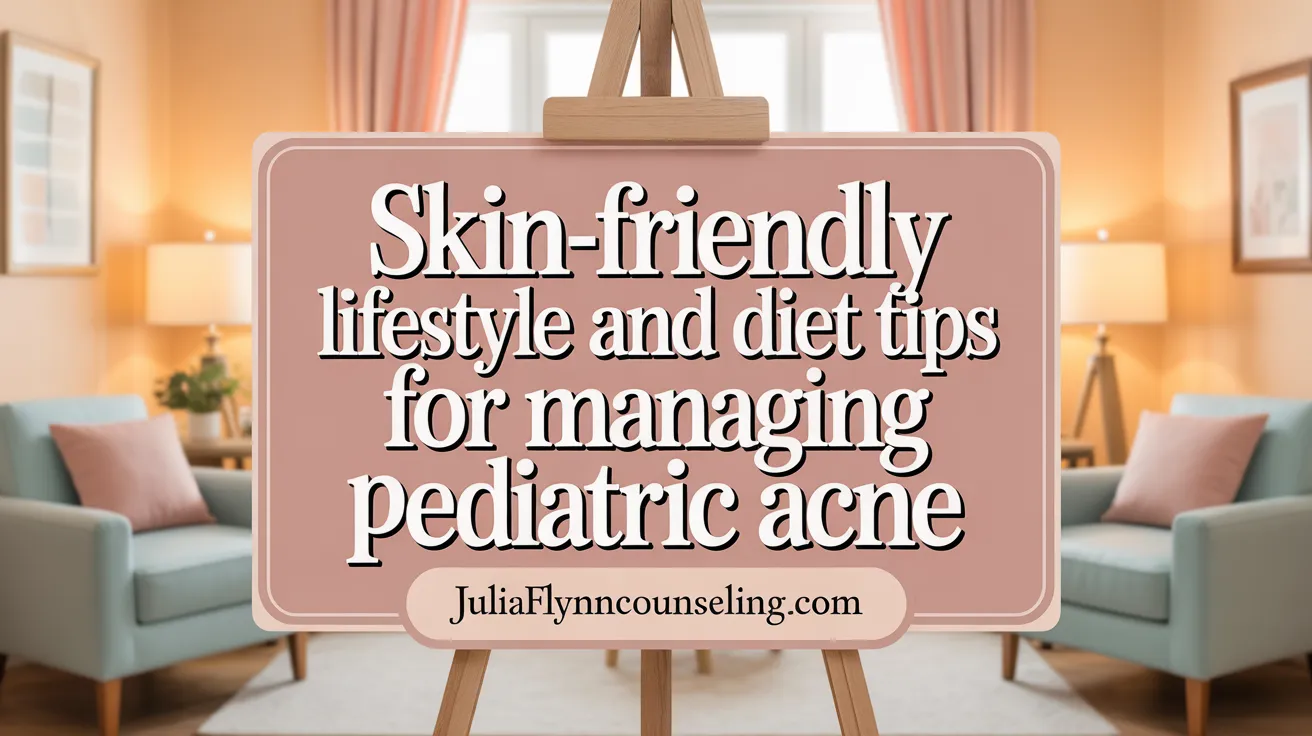
What natural treatments are safe and effective for pediatric acne?
While no natural remedy is universally endorsed as a sole treatment for pediatric acne, some approaches can support skin health when used carefully. Tea tree oil, a natural antimicrobial agent, may help decrease inflammation and reduce bacteria on the skin when diluted properly. It’s important to test for skin sensitivity beforehand, as pure tea tree oil can sometimes cause irritation in children.
Good skincare habits are fundamental. Using gentle, non-comedogenic cleansers and avoiding harsh scrubs can prevent skin irritation. Promptly showering after sweating can also lessen pore blockages that contribute to acne.
Diet plays a role in overall skin health. Limiting high-sugar and processed foods, reducing dairy intake, and opting for a balanced diet with plenty of fruits and vegetables may help improve skin quality. Stress management and maintaining adequate hydration are additional natural strategies that support skin's ability to heal and stay healthy.
However, caution is essential. Natural treatments should complement, not replace, medical guidance. Always consult a healthcare provider to ensure safe and suitable care approaches for children with acne.
Importance of gentle skincare routines
Establishing a gentle skincare routine is vital. Using lukewarm water and mild, oil-free cleansers twice daily can help remove excess oil and dirt without damaging the skin’s natural barrier.
Applying moisturizer formulated for sensitive skin can prevent dryness caused by acne treatments. Sunscreen daily protects healing skin from UV damage and prevents dark spots.
Role of diet and lifestyle in skin health
A balanced diet rich in antioxidants and low in refined sugars may promote healthier skin. Avoiding excessive dairy and high-glycemic foods could potentially reduce inflammation.
Adequate sleep, regular physical activity, and managing stress are lifestyle habits that support hormonal balance and skin recovery.
Stress management and hydration
Stress can exacerbate acne by influencing hormonal levels. Mindfulness, relaxation exercises, and sufficient sleep are beneficial.
Drinking plenty of water keeps the skin hydrated, aids detoxification, and can help clear skin.
Precautions with natural treatments in children
Always consult a healthcare professional before initiating any natural remedies. Children’s skin can be sensitive, and some natural agents might cause allergic reactions or irritation.
Avoid applying essential oils directly without proper dilution. Monitor skin's response closely and discontinue if any adverse effects occur.
Incorporating these supportive, natural measures alongside conventional treatments can help children manage acne safely and effectively, fostering healthier skin and confidence.
Practical Management and Care Strategies for Pediatric Acne
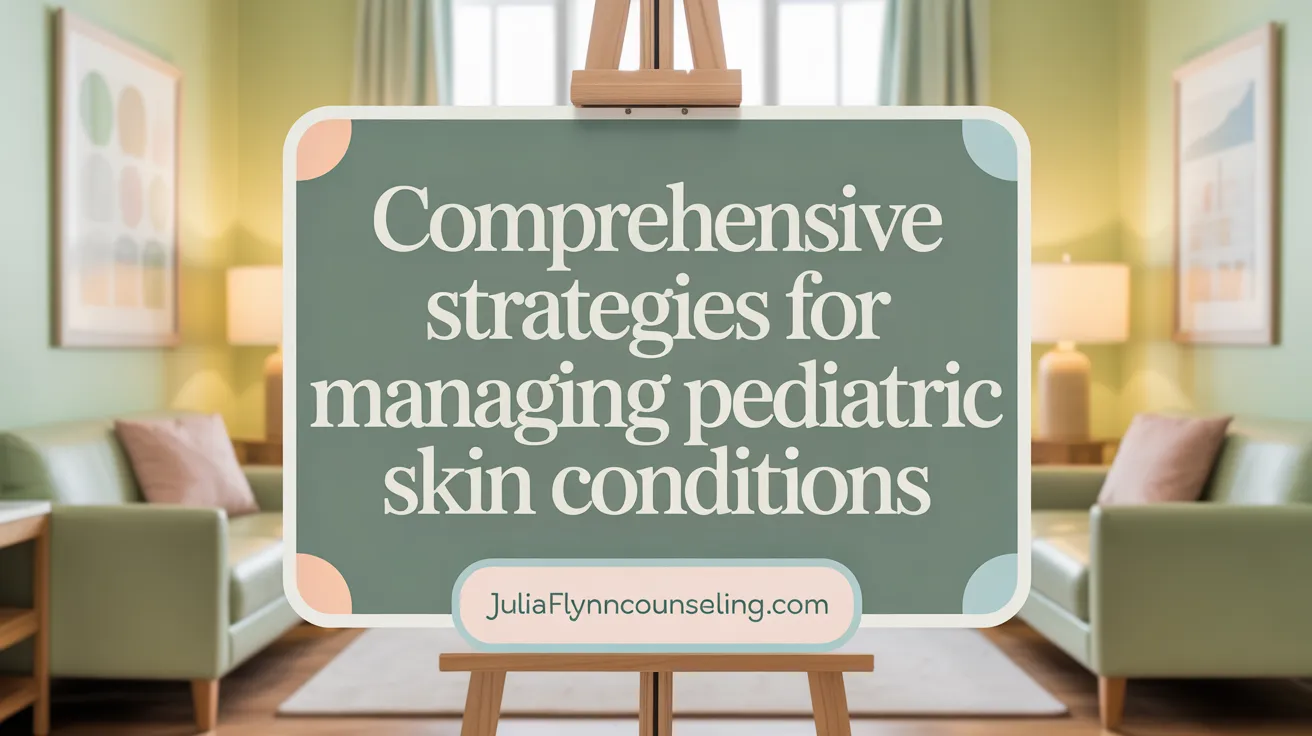
What are effective management and care strategies for children and teenagers with acne?
Managing acne in children and teenagers involves a combination of gentle skincare routines, lifestyle modifications, and, when necessary, medical treatments. A fundamental step is establishing a daily skincare routine that includes washing the face twice a day with warm water and a mild, non-comedogenic cleanser. This helps remove excess oil, dirt, and dead skin cells without irritating the skin.
Avoiding aggravating factors is crucial. This includes steering clear of oily or greasy skincare and hair products, which can block pores and worsen acne. Moreover, refraining from picking or squeezing pimples prevents skin damage and scars. Consistent use of over-the-counter treatments like benzoyl peroxide gel or salicylic acid can effectively control mild breakouts.
In cases of more severe or persistent acne, prescription treatments such as topical retinoids, antibiotics, or systemic medications like isotretinoin may be necessary under the guidance of a healthcare professional. Early intervention is important to prevent scarring and manage the emotional impact, such as low self-esteem or depression.
Preventive measures, including proper hygiene, avoiding harsh scrubs, and reducing exposure to cosmetics with pore-clogging ingredients, help minimize flare-ups. Regular follow-up appointments with a pediatrician or dermatologist ensure that treatments are effective, side effects are monitored, and the approach is tailored to the child's skin response.
Overall, adopting a comprehensive approach that combines skincare, lifestyle adjustments, and medical management can help young individuals achieve clearer skin, while also addressing psychological well-being.
Supporting Healthy Skin and Well-Being in Children with Acne
Pediatric acne is a widespread condition with multifactorial causes ranging from hormonal changes to environmental influences. Recognizing the symptoms early and understanding effective treatment options can help prevent complications such as scarring and emotional distress. Parents and caregivers play a vital role by establishing good skincare habits, being aware of when to seek medical advice, and supporting children throughout their treatment journey. Healthcare providers can offer personalized care strategies based on severity and individual needs. Together, these efforts contribute to healthier skin and improved confidence for children and adolescents facing acne challenges.
References
- Understanding Acne in Teenagers and Kids: Causes, Treatment ...
- Acne: Causes and Treatment - Nationwide Children's Hospital
- Teen Acne: How to Treat & Prevent This Common Skin Condition
- Acne Vulgaris in Children and Adolescents: What's the Cause and ...
- Acne 101: Understanding Causes and Treatment Options
- Acne | Pediatric Care Online - AAP Publications
- Pediatric Acne Management - Schweiger Dermatology Group
- Acne | Causes, Symptoms & Treatment - Cincinnati Children's Hospital
- Acne in Children and Teens - Kids Central Pediatrics
- Atlanta GA Childhood/Teen Acne Treatment | Decatur, Brookhaven
